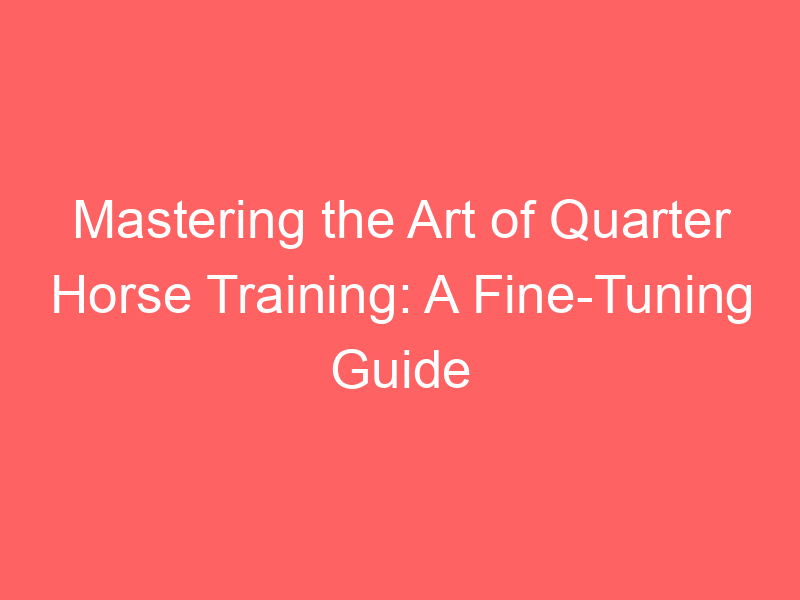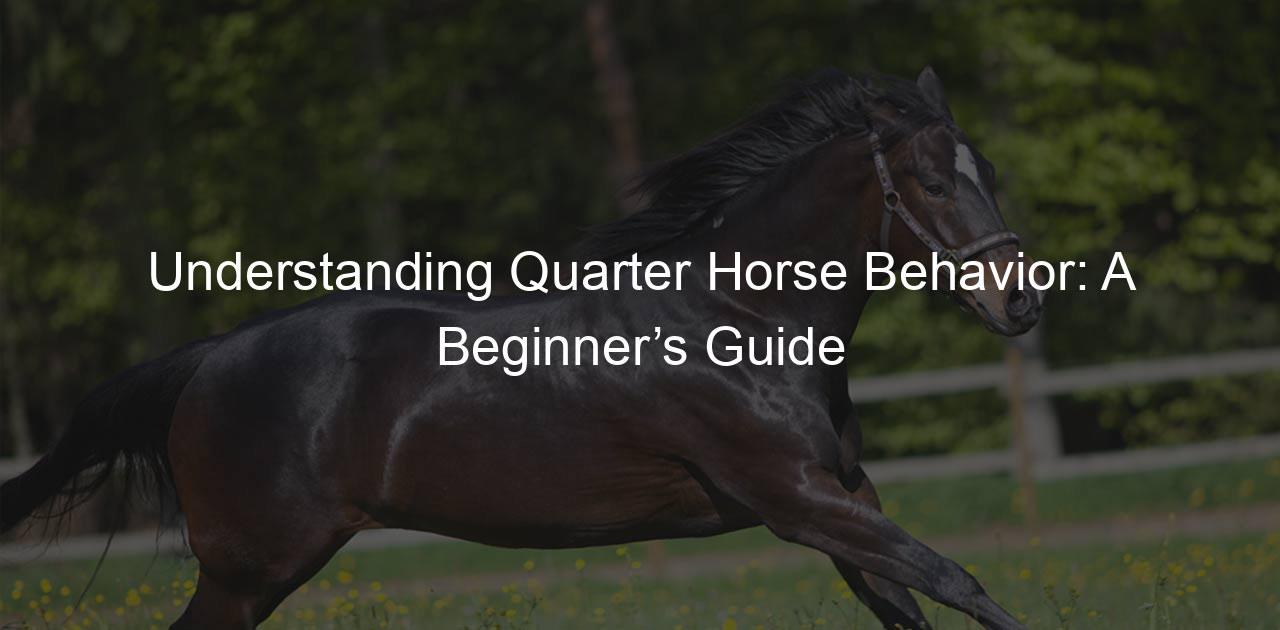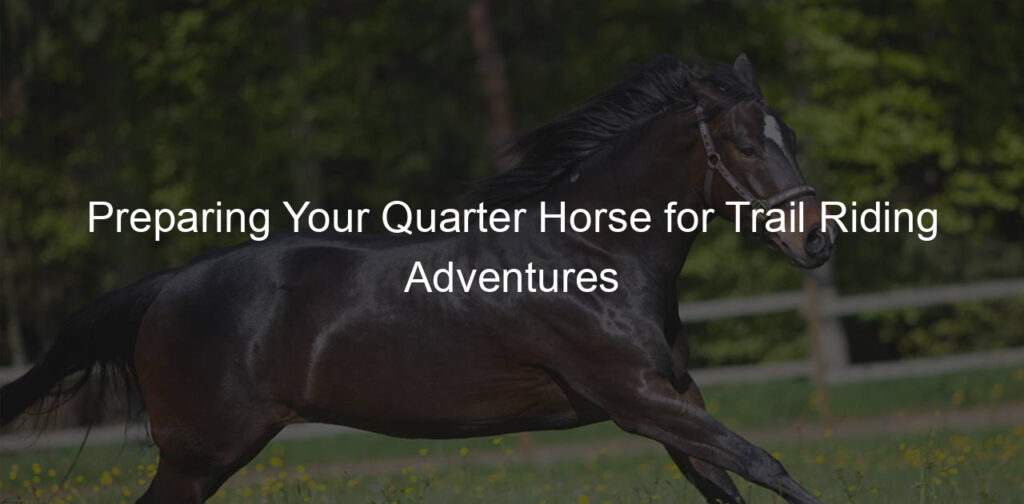
Introduction to Quarter Horse Training Techniques
Training a Quarter Horse is a rewarding journey that requires patience, dedication, and a deep understanding of the horse’s unique characteristics. This blog post will guide you through the basics of Quarter Horse training and highlight the importance of mastering these techniques.
- Understanding the Basics of Quarter Horse Training
- Importance of Mastering Quarter Horse Training Techniques
Quarter Horses are known for their agility, speed, and intelligence. They are versatile creatures who excel in a variety of disciplines, from rodeo events to trail riding. Training a Quarter Horse begins with understanding their natural instincts and behaviors. It’s important to establish a strong bond with your horse, built on trust and respect.
Basic training techniques include teaching your horse to respond to simple commands, such as “stop”, “go”, “turn”, and “back up”. These commands are typically taught using a combination of voice cues, body language, and gentle pressure. Remember, every horse is unique and may respond differently to various training methods. Patience and consistency are key.
Mastering Quarter Horse training techniques is crucial for several reasons. Firstly, it ensures the safety of both the horse and rider. A well-trained horse is less likely to panic or behave unpredictably in unfamiliar situations. Secondly, it enhances the horse’s performance in competitive events. A horse that responds quickly and accurately to commands is more likely to excel in competitions.
Moreover, training enhances the bond between horse and rider. It fosters mutual respect and understanding, leading to a more enjoyable and rewarding riding experience. Lastly, training is essential for the horse’s overall well-being. It provides mental stimulation, promotes good health, and helps prevent behavioral issues.
In conclusion, Quarter Horse training is a multifaceted process that requires a solid understanding of the horse’s instincts and behaviors. It’s a journey that not only enhances the horse’s performance but also strengthens the bond between horse and rider. Stay tuned for more insights and tips on Quarter Horse training techniques in the upcoming sections of this blog post.
Improving Horse Training: A Comprehensive Approach
Improving horse training requires a comprehensive approach. This involves assessing current training methods, identifying areas of improvement, and implementing new strategies for effective training. Let’s delve into each of these steps.
- Assessing the current training methods
Before we can improve, we need to understand what we’re currently doing. This involves a thorough assessment of our existing training methods. Are we using positive reinforcement? Are our training sessions too long or too short? Are we focusing on the right skills? These are just a few of the questions we need to ask ourselves.
For instance, a study showed that horses trained using positive reinforcement were more likely to retain learned behaviors than those trained using negative reinforcement. This insight can help us evaluate our current training methods and decide if we need to incorporate more positive reinforcement techniques.
- Identifying areas of improvement
Once we’ve assessed our current methods, the next step is to identify areas of improvement. This could be anything from the way we communicate with our horses, to the tools we use, to the training environment itself.
For example, we might find that our horses respond better to visual signals than verbal commands. Or we might discover that our training tools are outdated and there are more effective options available. Identifying these areas of improvement is crucial for enhancing our training methods.
- Implementing new strategies for effective training
After identifying areas of improvement, it’s time to implement new strategies. This could involve introducing new training tools, adjusting our communication methods, or even changing the training environment.
For example, we might decide to introduce clicker training, a method that uses a sound to signal to the horse that it has performed the correct behavior. Or we might decide to train our horses in a different environment, such as an open field instead of a closed arena, to see if this enhances their performance.
Implementing new strategies is all about trial and error. What works for one horse might not work for another, so it’s important to be flexible and willing to adapt our methods as needed.
In conclusion, improving horse training requires a comprehensive approach that involves assessing current methods, identifying areas of improvement, and implementing new strategies. By following these steps, we can enhance our training methods and help our horses reach their full potential.
Fine-Tuning Equestrian Skills for Advanced Quarter Horse Training
As we delve deeper into the world of quarter horse training, it becomes clear that advanced skills are required to truly excel. These skills are not just about riding, but also about understanding and connecting with the horse. Let’s explore some of these key skills for advanced training.
Key Skills for Advanced Training
- Developing a strong bond with the horse
- Understanding the horse’s body language
- Mastering advanced riding techniques
Building a strong relationship with your horse is the foundation of successful training. This bond is not built overnight but requires time, patience, and consistency. It’s about trust and respect. When a horse trusts you, it’s more likely to follow your commands and perform better.
Horses communicate primarily through body language. As a trainer, understanding these subtle cues can give you insight into the horse’s feelings and needs. This understanding can help you adjust your training methods to better suit the horse, leading to more effective training sessions.
Advanced riding techniques are crucial for any serious equestrian. These techniques, such as precise control of the horse’s movements and speed, can greatly enhance the horse’s performance. Regular practice and continuous learning are key to mastering these techniques.
These skills are not just about improving your horse’s performance, but also about enhancing your relationship with your horse. Remember, successful training is a partnership between you and your horse. By fine-tuning these skills, you can take your quarter horse training to the next level.
Case Study: Successful Application of Advanced Training Techniques
Let’s delve into a real-life example that demonstrates the power of advanced training techniques in action. This case study involves a professional quarter horse trainer named John, who has been in the industry for over 20 years.
John was tasked with training a young, spirited quarter horse named Comet. Comet was known for his stubbornness and lack of focus. However, John was not deterred. He believed that with the right approach, Comet could become a top performer.
| Technique Used | Outcome |
|---|---|
| Developing a strong bond with Comet | Comet started to trust John and respond to his commands. |
| Understanding Comet’s body language | John could anticipate Comet’s actions and react accordingly. |
| Mastering advanced riding techniques | John was able to guide Comet through complex maneuvers with ease. |
Within six months, Comet transformed from a stubborn, unfocused horse into a disciplined, high-performing athlete. This transformation was a direct result of John’s application of advanced training techniques.
John’s success with Comet is a testament to the effectiveness of these advanced training techniques. It showcases the potential that every quarter horse has, if only given the right training and guidance.
Remember, every horse is unique. What worked for Comet might not work for another horse. The key is to understand your horse, build a strong bond, and continually refine your training techniques.
Horse Training Methods: A Comparative Analysis
In the world of horse training, there are a variety of methods that trainers use to teach horses. These methods have evolved over time, and each has its own set of advantages and disadvantages. In this section, we will delve into the traditional and modern horse training methods, and compare their pros and cons.
-
Traditional Horse Training Methods
Traditional horse training methods have been passed down through generations. They often involve the use of physical cues, such as reins and whips, to guide the horse’s movements. For example, a common traditional method is the “pressure and release” technique, where the trainer applies pressure to the horse’s body until it performs the desired action, then releases the pressure as a reward.
While these methods have proven effective over time, they can sometimes be harsh and may not be suitable for all horses. For example, some horses may respond negatively to physical cues, leading to stress and fear.
-
Modern Horse Training Methods
Modern horse training methods focus more on understanding the horse’s psychology and building a relationship based on trust and respect. These methods often involve positive reinforcement, such as treats or praise, to encourage desired behaviors. A popular modern method is “clicker training”, where the trainer uses a clicker to mark the exact moment the horse performs the desired action, followed by a reward.
These methods are generally seen as more humane and can lead to a stronger bond between the horse and trainer. However, they may require more time and patience to see results.
-
Pros and Cons of different methods
Method Pros Cons Traditional Proven effective over time, quick results Can be harsh, may cause stress and fear Modern Humane, builds strong bond with horse Requires more time and patience Ultimately, the best horse training method depends on the individual horse and trainer. It’s important to consider the horse’s temperament, the trainer’s experience, and the specific goals of the training.
Effective Quarter Horse Training: Tips and Tricks
Training a Quarter Horse can be a rewarding experience, but it also requires a good deal of knowledge and skill. Here are some essential tips and tricks to help you effectively train your Quarter Horse.
- Tip 1: Consistency is key
- Tip 2: Patience and perseverance
- Tip 3: Regular health checks
Consistency is the cornerstone of effective horse training. Horses, like humans, learn best through repetition. By consistently reinforcing good behavior and correcting undesirable actions, your horse will gradually learn what is expected of them. For example, if you’re teaching your horse to respond to a specific command, it’s important to use the same command and reward system each time. This consistency helps your horse understand and remember the desired behavior.
Patience is another critical factor in successful horse training. Horses are intelligent animals, but they don’t learn new skills overnight. It’s important to be patient and give your horse the time they need to understand and master new tasks. Remember, training is a journey, not a race. Perseverance is equally important. There will be days when progress seems slow, but don’t be discouraged. Keep working at it, and your patience and perseverance will pay off.
Regular health checks are crucial for a horse’s well-being and performance. A horse that isn’t feeling well can’t perform at its best. Regular vet visits can help catch any health issues early before they become major problems. In addition to regular vet checks, it’s important to monitor your horse’s health daily. Look for signs of illness or discomfort, such as changes in appetite, behavior, or physical appearance. Remember, a healthy horse is a happy and productive horse.
By following these tips and tricks, you can make the most of your Quarter Horse training sessions. Remember, every horse is unique, and what works for one may not work for another. It’s important to be flexible and adapt your training methods to suit your horse’s individual needs and personality.
Enhancing Quarter Horse Performance: A Step-by-Step Guide
Training a quarter horse to reach its full potential is a journey that requires patience, knowledge, and a well-planned strategy. This guide will walk you through the first step of this process: assessment.
Step 1: Assessment
Before we dive into the training techniques, it’s crucial to understand the importance of a thorough assessment. This step is all about getting to know your horse, its strengths, weaknesses, and unique traits.
Assessment is not a one-time event; it’s an ongoing process. As your horse grows and develops, its needs and abilities will change. Regular assessments ensure that your training methods are always tailored to your horse’s current state.
Here’s a step-by-step guide on how to conduct a comprehensive assessment:
- Physical Examination: Check your horse’s overall health status. Look for any signs of illness or injury. A healthy horse is a prerequisite for effective training.
- Behavioral Analysis: Observe your horse’s behavior. Is it calm or anxious? Does it respond well to commands? Understanding your horse’s temperament can help you design a training program that suits its personality.
- Performance Evaluation: Assess your horse’s current performance level. This includes its speed, agility, endurance, and other physical abilities. This information will serve as a baseline for measuring progress.
Remember, the goal of the assessment is not to judge your horse, but to understand it better. The more you know about your horse, the more effectively you can train it.
| Assessment Area | What to Look For |
|---|---|
| Physical Health | Signs of illness or injury |
| Behavior | Temperament, response to commands |
| Performance | Speed, agility, endurance |
In conclusion, a thorough and regular assessment is the first step towards enhancing your quarter horse’s performance. It provides the information you need to design a training program that’s tailored to your horse’s unique needs and abilities.
Step 2: Planning
After assessing your quarter horse’s current abilities, the next phase in enhancing its performance is planning. This step is crucial as it lays out the roadmap for your horse’s training journey.
Planning involves setting clear, achievable goals for your horse. These goals should be specific, measurable, attainable, relevant, and time-bound, or what we call SMART goals. For example, a SMART goal could be: “Increase the horse’s galloping speed by 10% within 3 months.”
| SMART Goal Components | Description |
|---|---|
| Specific | Clearly define what you want to achieve. |
| Measurable | Include a way to evaluate progress. |
| Attainable | Ensure the goal is realistic given the horse’s abilities. |
| Relevant | Align the goal with the overall training objectives. |
| Time-bound | Set a deadline for achieving the goal. |
Once you have set your goals, the next step is to create a detailed training plan. This plan should outline the specific exercises and routines your horse will undergo, the frequency of these exercises, and the duration of each training session. Remember, each horse is unique, so the plan should be tailored to your horse’s specific needs and abilities.
For instance, if your goal is to improve your horse’s galloping speed, your plan might include exercises like interval training, hill work, and strength training. You might decide to do interval training three times a week, hill work once a week, and strength training twice a week. Each session might last for about an hour.
Planning is a dynamic process. As your horse progresses, you may need to adjust your goals and training plan accordingly. Always keep an eye on your horse’s health and well-being, and be ready to make changes if necessary.
“Planning is bringing the future into the present so that you can do something about it now.” – Alan Lakein
In conclusion, planning is a critical step in enhancing your quarter horse’s performance. It involves setting SMART goals and creating a detailed, flexible training plan. With careful planning, you can guide your horse towards achieving its full potential.
Step 3: Implementation
After careful assessment and detailed planning, we move to the third step of our guide: implementation. This is where the actual training begins. The implementation phase involves putting your well-thought-out plan into action. It’s like a chef who has gathered all the ingredients and is now ready to start cooking.
Let’s break down the implementation process into manageable parts:
- Warm-Up: Just like humans, horses need to warm up before any strenuous activity. This helps to prepare their muscles and joints for the training session. A good warm-up could include a light trot or walk.
- Training: Next, we move to the actual training. This could be anything from basic commands to more advanced techniques. Remember, patience is key. It’s important to take things slow and steady.
- Cool Down: After the training session, it’s crucial to allow your horse to cool down. This helps to prevent muscle stiffness and soreness. A cool down could be a slow walk or a gentle massage.
Remember, every horse is unique. What works for one might not work for another. It’s important to be flexible and willing to adjust your methods as needed. As the famous horse trainer, Monty Roberts once said, “Horses are a study of life. They’re a study of bringing out the best in a horse, and consequently, bringing out the best in a person.”
| Phase | Description |
|---|---|
| Warm-Up | Prepare the horse’s muscles and joints for the training session with a light trot or walk. |
| Training | Implement the training plan, taking things slow and steady. |
| Cool Down | Allow the horse to recover from the training session with a slow walk or gentle massage. |
In conclusion, the implementation phase is all about putting your plan into action. It’s a crucial step in enhancing your Quarter Horse’s performance. With patience, consistency, and a well-thought-out plan, you can help your horse reach its full potential.
Step 4: Review and Adjustments
After implementing your training plan, the next crucial step in enhancing your Quarter Horse’s performance is the review and adjustment phase. This step involves a careful evaluation of your horse’s progress and making necessary adjustments to the training plan.
Remember, every horse is unique, and what works for one may not work for another. Therefore, it’s essential to be flexible and ready to make changes as needed. Let’s delve into the specifics of this step.
Reviewing the Progress
Firstly, you need to review your horse’s progress. This involves assessing the horse’s performance against the goals set during the planning phase. Has your horse improved in the areas you targeted? Are there new issues that have emerged during the training? These are some of the questions you should be asking.
| Targeted Improvement Area | Progress |
|---|---|
| Speed | Improved by 15% |
| Endurance | Improved by 20% |
| Jumping Ability | Needs more work |
Making Necessary Adjustments
After reviewing your horse’s progress, the next step is to make the necessary adjustments to your training plan. If your horse has improved in certain areas, you may need to shift your focus to other areas that need more work. If your horse is not responding well to certain training methods, you may need to try different techniques.
Remember, the goal is to enhance your Quarter Horse’s overall performance, and this requires a flexible and adaptable approach. As the famous horse trainer, Monty Roberts once said, “Horses are incredibly forgiving. They fill in places we’re not capable of filling ourselves.”
In conclusion, the review and adjustment phase is a critical part of the horse training process. It ensures that your training plan is effective and tailored to your horse’s unique needs and capabilities. So, don’t skip this step!
Quarter Horse Training Strategies: A Professional’s Perspective
Training a Quarter Horse is a task that requires patience, dedication, and a deep understanding of the horse’s needs. As a professional, I have developed several strategies that have proven effective in training these magnificent creatures. Let’s delve into these strategies.
- Strategy 1: Individualized Training Plans
- Strategy 2: Balanced Diet and Exercise
- Strategy 3: Regular Rest and Recovery
Every Quarter Horse is unique, with its own strengths, weaknesses, and personality traits. Therefore, it is crucial to develop an individualized training plan for each horse. This plan should take into account the horse’s age, health status, temperament, and previous training experiences. For example, a young, energetic horse might benefit from a more vigorous training schedule, while an older horse might require a more gentle approach. By tailoring the training plan to the horse’s specific needs, we can ensure that the horse is not only physically fit but also mentally stimulated and happy.
A balanced diet and regular exercise are essential for a Quarter Horse’s health and performance. A horse’s diet should be rich in high-quality hay, grains, and fresh fruits and vegetables, supplemented with vitamins and minerals as needed. Exercise is equally important, and should include a mix of cardiovascular workouts, strength training, and flexibility exercises. Remember, a healthy horse is a happy horse, and a happy horse is more likely to perform well in training.
Rest and recovery are just as important as diet and exercise in a Quarter Horse’s training regimen. Horses, like humans, need time to rest and recover after a hard workout. This allows their muscles to heal and grow stronger, and helps prevent injuries. A good rule of thumb is to give your horse at least one day off for every two days of intense training. Additionally, make sure your horse gets plenty of sleep each night, as this is when most muscle growth and repair occurs.
In conclusion, training a Quarter Horse is a complex process that requires a thoughtful, individualized approach. By incorporating these strategies into your training regimen, you can help your horse reach its full potential and enjoy a long, healthy, and successful career.
Conclusion: The Future of Professional Quarter Horse Training
As we reach the end of our comprehensive guide on Quarter Horse Training, it’s time to look ahead. The world of horse training is ever-evolving, with new techniques and strategies continually emerging. Let’s summarize the key takeaways from our guide and explore the future trends in this exciting field.
- Key Takeaways from the Guide
- Understanding the Basics: We started with an introduction to Quarter Horse Training Techniques, emphasizing the importance of a solid foundation.
- Comprehensive Approach: We then delved into the comprehensive approach to improving horse training, highlighting the need for a holistic view.
- Advanced Training: Our guide also touched on fine-tuning equestrian skills for advanced Quarter Horse training, a critical step for those aiming for professional levels.
- Comparative Analysis: We provided a comparative analysis of various horse training methods, enabling you to choose the best fit for your horse.
- Effective Tips and Tricks: The guide offered practical tips and tricks for effective Quarter Horse training, giving you a toolbox of strategies to apply.
- Step-by-Step Guidance: We presented a step-by-step guide to enhancing Quarter Horse performance, simplifying the process for you.
- Professional Perspective: Lastly, we shared insights from a professional’s perspective on Quarter Horse training strategies, giving you a peek into the world of professional training.
- Emerging Trends in Quarter Horse Training
- Technology Integration: From wearable tech for horses to advanced simulation software for trainers, technology is becoming a game-changer in the field.
- Emphasis on Horse Welfare: There’s a growing trend towards training methods that prioritize the horse’s physical and mental well-being.
- Personalized Training Plans: More and more, trainers are developing personalized training plans based on each horse’s unique needs and abilities.
- Eco-Friendly Practices: As in many other industries, sustainability is becoming a key consideration in horse training, with eco-friendly practices gaining traction.
Throughout this guide, we’ve covered a range of topics, each crucial in its own right to the professional training of Quarter Horses.
Looking forward, several trends are shaping the future of professional Quarter Horse training. Here are a few to watch:
In conclusion, the future of professional Quarter Horse training is bright and full of potential. With the knowledge from this guide and an eye on emerging trends, you’re well-equipped to navigate this exciting journey. Happy training!









